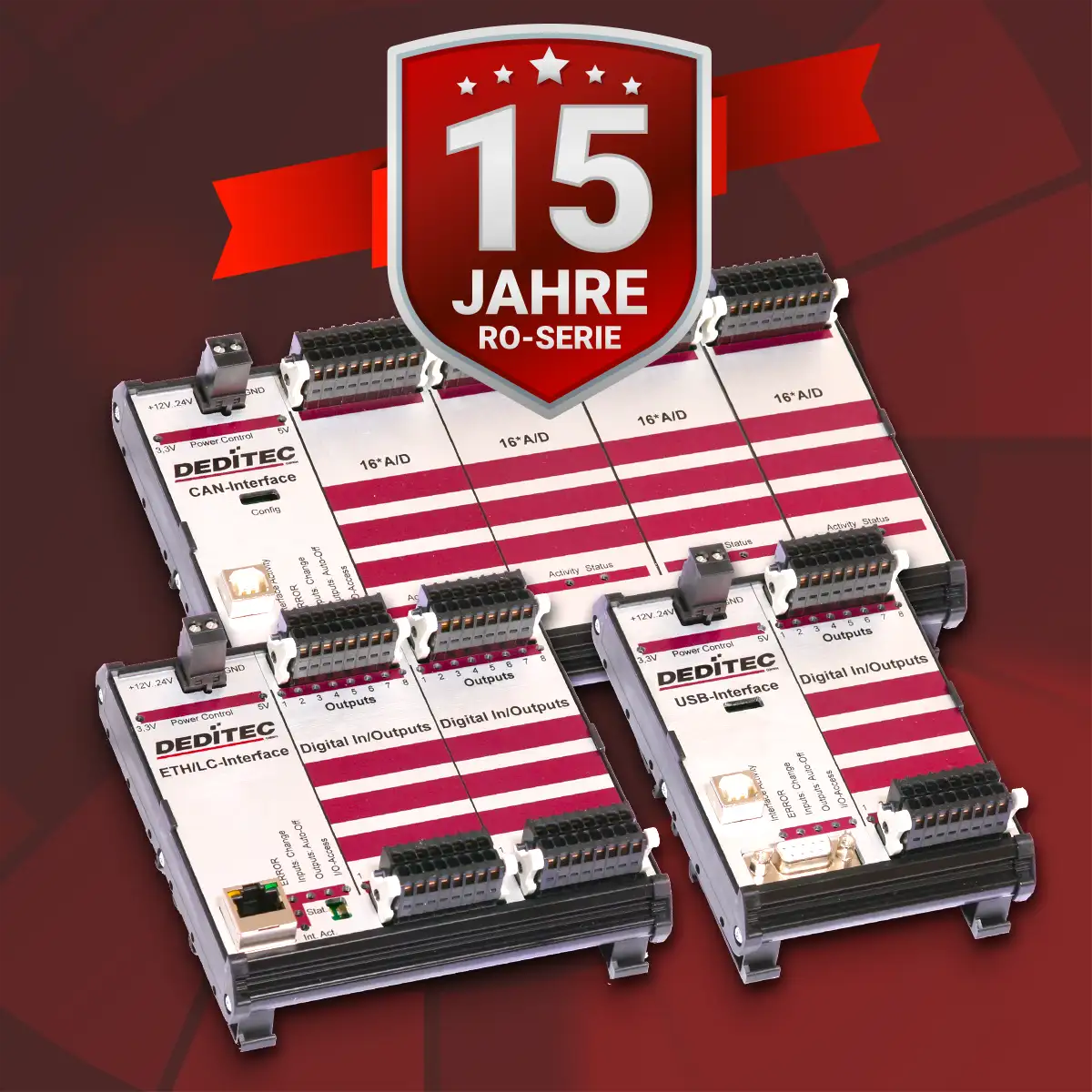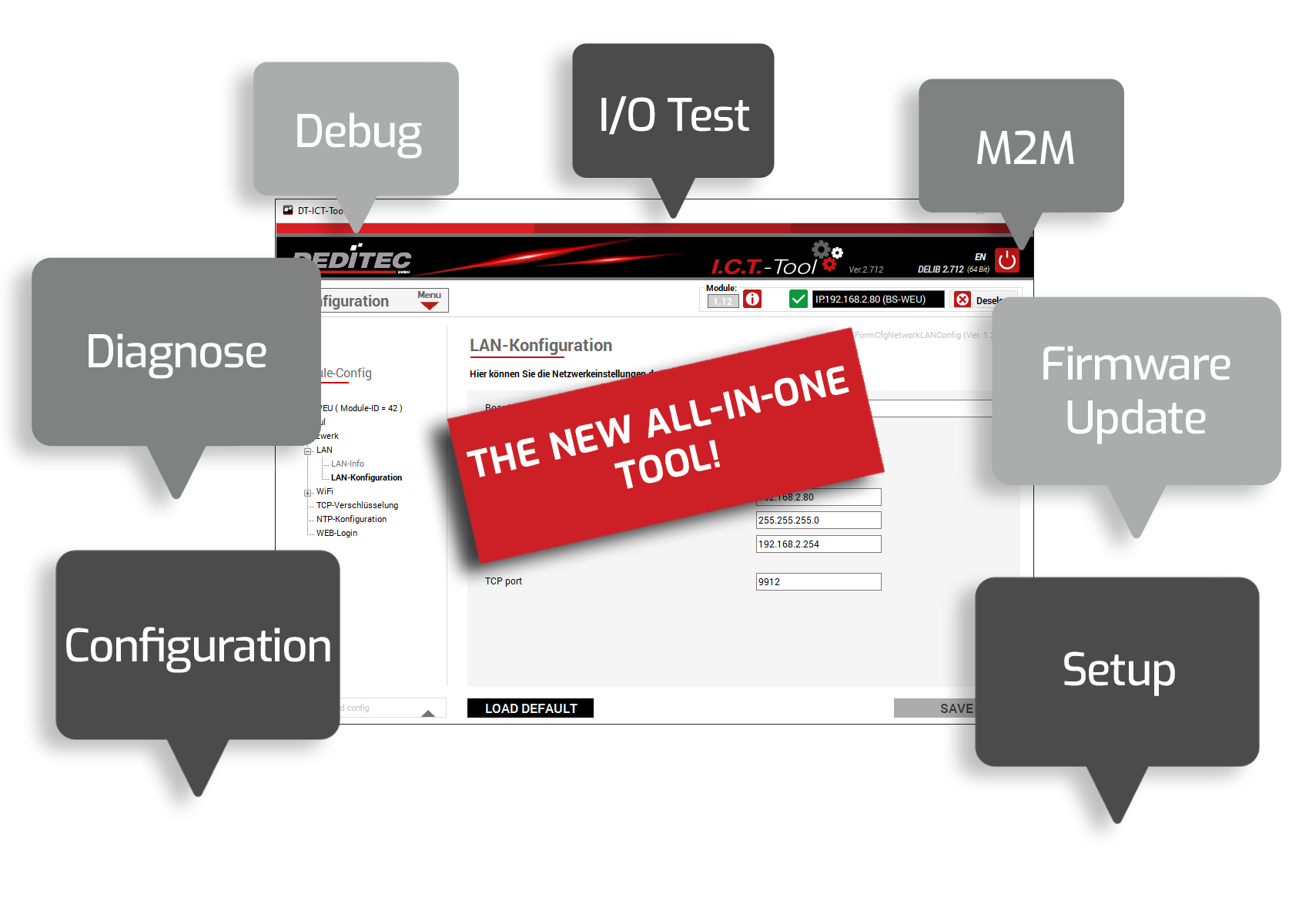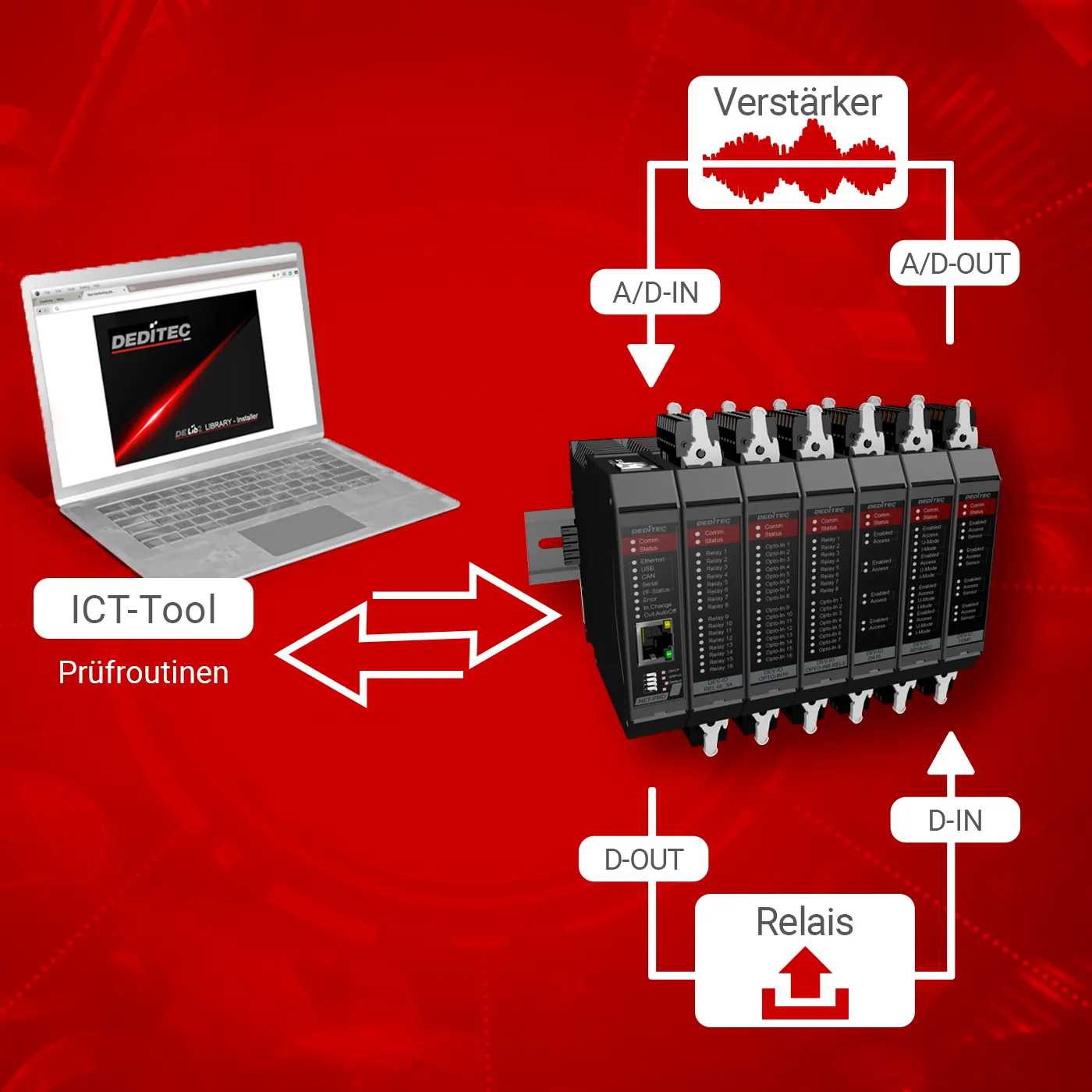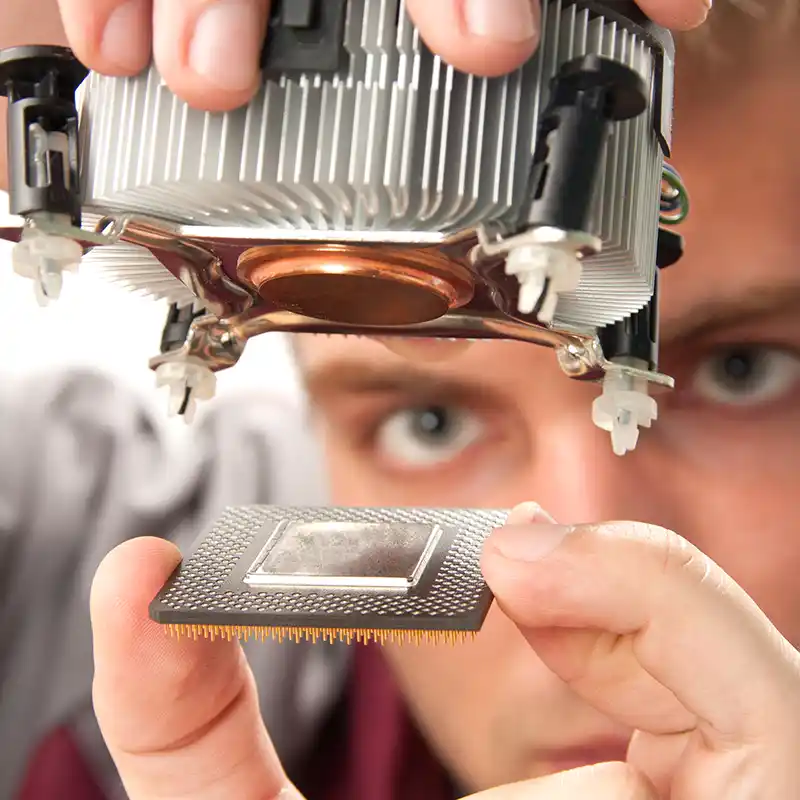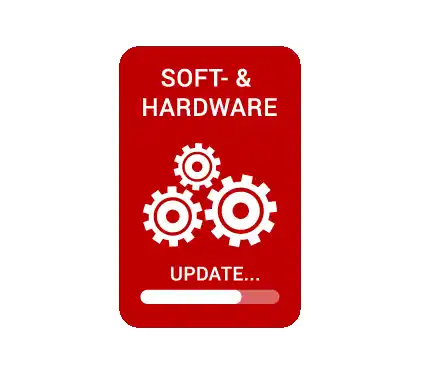Highlights
- CAN interface with galvanic isolation
- Supply voltage 12-24V DC
- 32 switching relay outputs (max. 30V DC, 2A, 60W)
- Retention of switching states after power failure
- Galvanic isolation via relay
- Open CAN protocol (CAN 2.0A/2.0B)
- Automatic receive mode (DEDITEC Auto-Rx mode)
- Extensive commands via proprietary driver library
- Screwable terminal strips for connection wiring
- Suitable for DIN rail mounting
CAN interface with 32 switching relays (bistable relays) in 2nd generation
The company DEDITEC in Brühl is expanding its extensive portfolio of I/O modules with the digital output module RO-CAN-R32_UM with 32 switching relays (bistable relays).
CAN interface
DEDITEC CAN modules have been developed for industrial use. Thanks to the open CAN protocol, these modules offer a high degree of flexibility and can be easily integrated into existing CAN systems. A special feature here is the concept of galvanic isolation of the CAN bus. This prevents interference or voltage peaks from being transmitted from the module to other CAN systems.
New in the second generation of DEDITEC CAN modules is the significantly more powerful Cortex M3 120 MHz CPU, which allows CAN packets to be processed much faster and more efficiently by the CAN module.
Bistable relay module
The bistable relays maintain the switching positions of the relays even if the power supply is lost. Each of these bistable relays has a changeover contact whose switching positions are indicated by two LEDs on the module. The maximum switching voltage is 30V DC (2A, 60W), but this can be extended to up to 230V with optional accessories. Thanks to their special properties, the bistable relays are versatile and can be used in a wide range of applications, for example in the automotive industry or network technology.
Flexible control
The CAN interface allows the module to be addressed directly via the open CAN protocol (CAN 2.0A/2.0B). By using this protocol, the user is not tied to a specific operating system, but can develop with any system that supports CAN. This means that the module can of course also be controlled by other participants within the CAN bus.
Control via DEDITEC Auto-Rx mode
The RO-CAN-R32_UM is capable of responding to CAN messages from other CAN bus participants. The free CAN Configuration Utility tool is included in the scope of delivery for this purpose. This tool can be used to specify a CAN ID (11 or 29 bits) to which the module should respond. The 8 bytes of user data from all incoming CAN messages on this ID are then forwarded to the outputs. Depending on the bit value, each output is then switched independently to one of the two switching positions. This configuration can be carried out from any PC with a USB interface and is stored in the EEPROM of the CAN module. This means that the configuration only needs to be carried out once.
Installation
The compact module, measuring 208 x 122 x 51.5 mm (L x W x H), also features a DIN rail mount, making it easy to install in distribution cabinets or sub-distribution boards. The power supply (12V to 24V) can be provided by a standard power supply unit.
Software
The extensive Windows driver library (DELIB) enables uniform and very simple control of the modules in almost all available programming languages. At the same time, a ready-made configuration and test program is available to the customer after installation of the DELIB driver library.
Very popular due to its high flexibility!
The digital relay outputs of the RO series can be expanded in 8-fold increments (max. 64) and can of course be combined with other interfaces (Ethernet, USB, or RS-232/RS-485 interface) or sub-modules (e.g., other analog I/Os or temperature inputs) of the RO series! Existing modules can also be expanded with analog outputs, for example.
